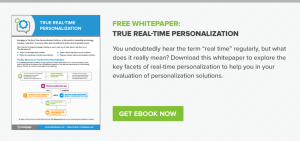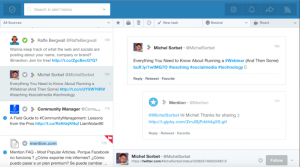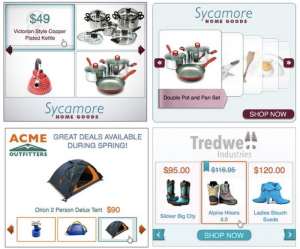Web design is one of those industries where you can have clients that pay $ 50,000 or $ 500.
You can have the ones that give you creative freedom and the ones that feel the need to check on you every hour on the hour.
I’m sure every designer would love a limitless budget and artistic freedom to create whatever they want but that’s not possible. Clients hire you to achieve goals and their goals and usually have a finite budget.
That doesn’t mean you can’t help them bring your dream to life while expressing your creative side. What it means is that you have to choose the right clients instead of accepting anything that comes your way.
In this article, I’ll walk you through a simple process that’ll help you land better clients and actually enjoy the work you do.
Prospecting and outreach
It can be argued that this is the most important aspect of the entire process.
When sales and marketing teams work together, there are terms called MQL (Marketing qualified lead) and SQL (sales qualified lead). It’s a way of describing how good the prospect is for your business. The better the prospect, the easier it is to turn them into a client.
The key to getting your dream web design clients is pulling the right people into your pipeline. You do this by creating a clear ideal customer profile (ICP). An ICP, as the name suggests, is a written summary of characteristics your ideal customer has. This organization or individual gets massive value from you and you get massive value from them.
A few things to include are:
- The size of the organization
- Size of the department (if applicable)
- The person who’ll make the decision about your services
- What niche or industry do they serve
- What’s the main objection preventing them from buying your solution
- What makes your solution important to them right now
- What is the overarching goal they’d like to achieve with your service
- How do they currently solve this problem
These aren’t all the possible considerations but it’s a good start. If you can use facts from past clients to develop your ICP, you’ll be well on your way to getting better clients.
Now that you know who you want to work with, it’s time to find them. Most niches have places they congregate. It could be Facebook, Twitter, meetups, etc. It’s your job to know where your ideal prospects hang out so you can create a shortlist of people you’ll reach out to.
The last part of the first step is to reach out to your ideal customer. I won’t give you a template because those have limited utility and are all over the internet. Instead, focus on approaching your prospects as someone who wants to learn more about them and their company.
You’re not just another person that comes off as salesy. You’re a potential partner and it’s the beginning of a mutually beneficial relationship.
Once you’ve contacted your prospect and they’re interested in what you’re offering, it’s time to wow them with a killer proposal.
Create a great proposal
A website proposal is so important because it shows that you understand the challenges of the client and have a working solution in mind. It ensures you’re all on the same page about the project. If anything is off or there’s confusion, the proposal can be reworked until it’s in line with what everyone expects.
There are a number of moving parts to a web design proposal that you have to get right. Here’s what should be included:
- Introduction that gives basic details about you and your company.
- A problem statement that goes into detail about the challenge your client is experiencing.
- The goals/solutions you’re proposing which solve the client’s previously outlined problems and help them arrive at their goals.
- A breakdown of the services in your standard design package for clients and any add-on services.
- Testimonials/case studies to show you mean business and the outcomes you’ve gotten for clients in the past.
- Processes and timelines to complement your service breakdown and give the client a more transparent view of what is going to be happening and when.
- A pricing page that answers their most pressing question at that point in time – how much will this cost me?
- The next steps so your client knows what to do if everything checks out and they want to work with you.
- A contract or signature page so that it’s all in writing and you can get to work knowing you’re protected.
Focus on the outcome, not the minutiae
The time for giving a detailed account of your processes comes when you’ve signed them up as a client. After they’ve gotten your proposal, have looked it over, and are ready to talk about it, don’t focus on the tiny details. They won’t hire you to teach them web design. You get hired to take your knowledge and create something unique and spectacular for them.
If you’ve gotten this far, that means the prospect is interested and just needs a few more questions or concerns to be ironed out. You’ve explained processes, the services, and everything else in the proposal so if they don’t have specific questions but are still hesitating, it may mean they’ve not seen the outcome you’ve promised.
For example, if you mentioned that the outcome they can expect from a redesign is a 150% increase in daily leads, it may be hard for them to believe that. If they’re hesitating at this point then it’s important for you to continually communicate that outcome and instill confidence that you’ll be able to accomplish it.
Share more case studies or testimonials, mention anecdotes that support your stance, or even give a high-level overview of the processes involved. In the end, you have to ask for the sale and be prepared for a few people to say no.
Conclusion
Web design clients range from amazing to horrible. It’s just like with any other business – you get what you put in.
If you scrape a bunch of emails and send out templated messages then the clients you get will be mediocre at best. If you instead focus on creating an ICP, prospect carefully, send out great proposals, and focus on the outcomes then you’ll get your ideal clients.
This process, though simple on the surface but takes time to perfect so start creating your ICP and reaching out to get practice (and better clients).
Business & Finance Articles on Business 2 Community
(27)






